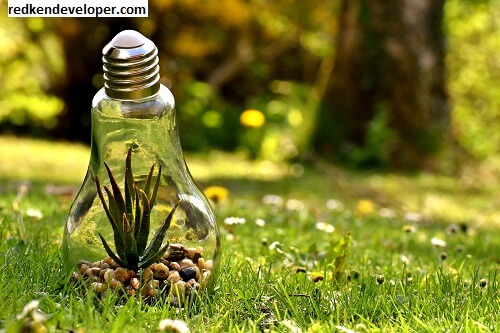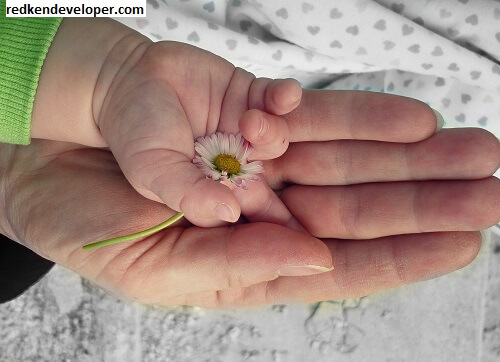Responsibilities of a Senior MuleSoft Developer:
Developer:
MuleSoft is the most popular integration platform used for connecting the dots in on-premises, cloud environments, applications, data, and devices. A Senior MuleSoft Developer fills an important slot in the ecosystem by way of designing, implementing, and maintaining enterprise-grade integration solutions. The article looks at the main responsibilities a Senior MuleSoft Developer plays, the skills required for this post, and answers some of the frequently asked questions about the role.

Introduction to MuleSoft:
Developer:
MuleSoft, a Salesforce company, is the leading provider of integration platforms, called the Anypoint Platform. This empowers companies to design, deploy, and manage APIs and integrations, hence now enabling innovation in organizations through smooth processes, a fluent flow of data, and decreased time-to-market for new offerings of products and services. It combined broad sets of tools for API management, microservices, event-driven architectures, and hybrid cloud integrations.
Companies are solving their integration problems using MuleSoft, hence needing developers who have the required skills. For instance, as a company scales up with MuleSoft in trying to solve its integration challenges, it becomes critical for a Senior MuleSoft Developer to be involved in shaping and maintaining a robust integration strategy across the enterprise.
Key Responsibilities of a Senior MuleSoft Developer:
Developer:
The main responsibilities of a Senior MuleSoft Developer are deep knowledge of the platform, strong problem-solving skills, and leadership skills. Key responsibilities are underlined below:
1. Design and Develop Integration Solution:
The primary role that a Senior MuleSoft Developer will play is that of designing and implementing integration solutions to meet business requirements. This includes the following aspects:
- API Design: The developer is charged with designing RESTful APIs per the standards of RAML – RESTful API Modeling Language or OpenAPI that interact across systems.
- Mule Flows: The developer will design Mule flows. Essentially, this is an indication of what route to follow in the course of message processing through main components like databases, message queues, and web services.
- Integration Patterns: Implement integration with the use of appropriate message routing, message transformation, and error handling.
- Data Transformation: Map data from one format to another; perform data transformation using the MuleSoft DataWeave language including but not limited to JSON, XML, CSV, etc.
2. API Management Leadership:
MuleSoft offers market-leading API management for the AnyPoint Platform. As a Senior MuleSoft Developer:
- API Gateway: Implement, configure, and manage API Gateway security throttling, and rate limiting.
- Security: Enforce best practices in API security, including OAuth 2.0, JWT, and API keys to lock down APIs against unauthorized access.
- API Lifecycle Management: Administering the lifecycle of APIs from design through deployment, including versioning and deprecation management.
- Analytics and Monitoring: In-built analytics include the use of the Anypoint Platform in tracking the performance and usage patterns of APIs, error logs, etc.
3. Integration with Third-Party Systems:
Developer:
The most senior MuleSoft Developer should be able to participate in seamless integrations for third-party applications, services, and legacy systems. The kinds of integrations may include:

- Cloud-based Services: On-cloud service integrations using out-of-the-box/pre-built connectors for Salesforce, SAP, AWS, etc., or custom integrations.
- On-premise Systems: Oversee the integrations of the on-premise legacy systems, databases, and middleware in environments where proper data flow is warranted.
- SOAP/REST Web Services: Availing standard web services, both at SOAP-based and RESTful levels, to connect to third-party web services, including protocol transformations between them.
4. Performance Optimization:
One of the key responsibilities of a Senior MuleSoft Developer is performance optimization for MuleSoft applications. This encompasses:
- Load Balancing: Solutioning should be scalable, allowing for more traffic by implementing load-balancing strategies.
- Caching: Implementation of data caching techniques, preventing redundant fetches of data hence improving performances.
- Error Handling: Strong error handling to minimize system downtime for the highest availability.
- Performance Tuning: Observe performance and perform changes in order to optimize the system with regard to speed, memory usage, and reliability.
5. Providing Technical Leadership and Mentorship:
The senior developer role includes leadership, too. For this, the responsibilities would be the following: Team collaboration with the team of developers and liaising with architects, business analysts, and other stakeholders.
- Code Reviews: Conduct code reviews to ensure the best practices, coding standards, and policies of the company are followed.
- Mentor junior: developers on problem-solving techniques and their technical development.
- Best Practices: Enforce best practices for coding, version control, testing, and deployment.
6. Ensuring Quality and Security:
Developer:
Among the key aspects of any integration solution, are quality assurance, and security features. The responsibilities of a Senior MuleSoft Developer:
- Unit and Integration Testing: This involves the writing of unit tests and integration tests, respectively, and their execution with support from appropriate tools such as MUnit to verify that an integration solution functions in a reliable manner.
- Automated Testing: Establish appropriate automated testing frameworks that ensure API contract maintenance, in addition to high-quality code, over time.
- Security Compliance: Integrations shall be designed to meet the internal security standard, data privacy regulations such as GDPR requirements, and other external compliance requirements.
7. Improvement and Upgrades:
Since MuleSoft is in active constant evolution, a Senior MuleSoft Developer should keep informed of newly released features, updates, and level best practices. Major Responsibilities Include:
- System Upgrades: Apply patches, upgrades, and new releases published for the Anypoint Platform to keep the Integration Environment up-to-date.
- New Technology Research: Research new tooling/technology that may benefit the integration strategy and shall include but is not limited to machine learning models or event-driven architecture.
8. Stakeholder Communication and Reporting:
- The Senior MuleSoft Developer interacts and communicates with technical teams, business units, and management levels. This shall include the following:
- Requirements Gathering: Work with business analysts to gather requirements and understand the needs of the business for the integrations.
- Reporting: Conduct regular project status updates of the integration projects; Highlight any issues and achievements.
- Client Interaction: Interaction with clients might be required at times to understand the requirements and priorities of the business. The support should also be extended technically during the implementation phase.
Required Skills for a Senior MuleSoft Developer:
Developer:
The candidate would be expected to have an array of the following skills for the above-mentioned role of Senior MuleSoft Developer:
- MuleSoft AnyPoint Platform: Exposure to Anypoint Studio IDE, Anypoint Exchange, and Anypoint Management Console would be expected in this regard.
- Integration Patterns and API Design: The candidate should be able to show his/her ability for in-depth integration, API management nt, and best practices involved in API design.
- Programming Skills: At least one of the used programming languages is mastered, including Java and/or JavaScript.
- Data Transformation: Experience in DataWeave and the development of data transformation among different formats, including JSON and XML.
- Integrations Cloud and On-premises: Work experience with cloud-based or on-premise integrations.
- Version Control: Knowledge of working with version control systems.
- Testing and Debugging: Candidate shall have experience in writing tests – unit/integration – and debugging integration flows.
- Soft Skills: Excellent communication, collaboration, and leadership skills.
Frequently Asked Questions:
Developer:
1. What does each level imply as to what a Junior, Mid-level, and Senior MuleSoft Developer do?
The basic differences among the Junior, Midlevel, and Senior MuleSoft Developer are issues of experience, responsibility, and leadership:
- Junior Developer: A Junior MuleSoft Developer is a fresher into the platform, and his major tasks involve learning and implementing basic-level skills, like creating simple integration flows, assisting in debugging processes, and many other related activities.
- Mid-level Developer: The mid-level MuleSoft Developers fall senior with experience gained over the years and deal with complex tasks at large involving integration. They might be entrusted with designing aspects involved in API integrations and may have deep knowledge about features in MuleSoft.
- Senior Developer: The senior MuleSoft Developer is highly experienced with all aspects of designing large-scale integration solutions, supplying technical guidance to the development team, mentoring junior developers, and driving best practices.
2. What would be the basic toolkit of a Senior MuleSoft Developer?
Some of the tools, according to the role of a Senior MuleSoft Developer, would be:
- Anypoint Studio: Integrated development environment for designing, testing, and deployment of Mule applications.
- AnyPoint Exchange: This includes a reusable component library, templates, and connectors to build an API. Any Point
- Platform: On this platform, APIs are managed, monitored, and deployed. MUnit: This is the testing framework of MuleSoft for unit and integration tests.
- Git: This is used for version control of your code changes and collaboration. 3. What value does a Senior MuleSoft

3. What Developer brings the success of a project?
A Senior MuleSoft Developer should contribute to the design of scalable, reliable, and secure integration solutions. They ensure that APIs and Integration flows meet the business requirements by extending technical leadership and mentoring the development team. They need to ensure that the integration architecture addresses Enterprise standards and best practices.
4. What are the most common issues a Senior MuleSoft Developer usually faces?
- Complex Integrations: The requirement to integrate a large number of systems that use heterogeneous technologies and data formats will add to the complexity.
- Performance Tuning: Development challenge for the integration platform to scale effectively with heavy loads.
- Integrations with Legacy Systems: The development of integrations with older systems or with systems that do not follow recent standards will be challenging and may take a great deal of time.
5. How would a Senior MuleSoft Developer pursue career advancement?
A Senior MuleSoft Developer might develop their career by:
- Further into a MuleSoft Architect who leads the integration strategy across the enterprise.
- Advanced Certifications include MuleSoft Certified Integration Architect.
- Leading cross-functional teams with deeper involvement in strategic planning and decision-making.